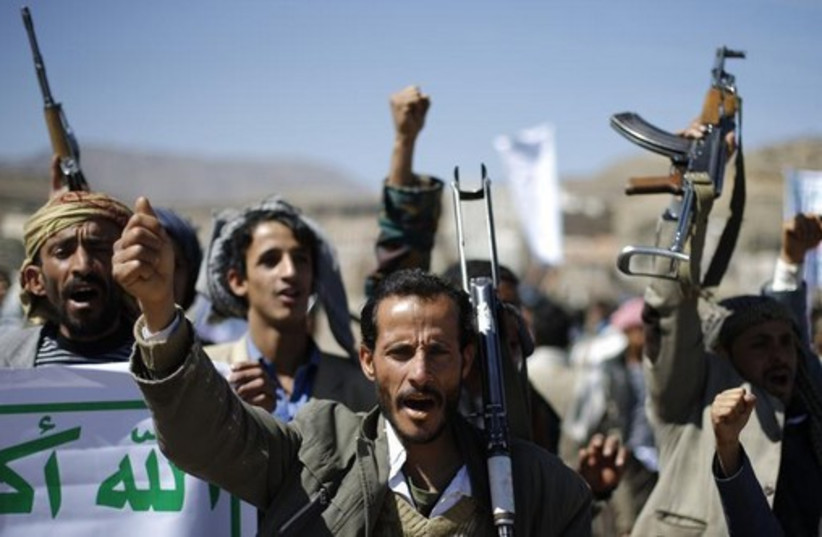It is rare that Israel has had to contend with an entirely new adversary that threatens its access to entire parts of the world. But that is exactly what is occurring with the growing Houthi threat, based in Yemen.
This year, while Israel fought off Hamas in Gaza, the Houthi threat in the Red Sea grew. Moreover, the Houthis, fully supported by Iran, built an arsenal of ballistic missiles and drones that can reach Israeli territory.
Most Houthis, who are Zaydi Shi’ite Muslims, live in the rugged mountains of northern Yemen. When they first emerged, their capital was Taiz, but now they are based in Sana’a.
The founder of the Zaydi sect, Zayd ben Ali, was the great-grandson of Ali, a close descendant of Islam’s prophet, Mohammed. Zayd fought what he saw as the corruption in the Umayyad Caliphate centered in Damascus in the 8th century. For both Sunni and Shi’ite Muslims, Zayd became a natural symbol of righteousness.
“The Houthis have made fighting corruption the centerpiece of their political program” asserts Bruce Riedel of the Brookings Institution, noting that the Houthis “emerged as a Zaydi resistance” to Yemen’s former president Ali Abdullah Saleh and “his corruption in the 1990s.”

The Houthi naval attack this week on a vessel in the Red Sea, the Galaxy Leader, marked the latest projection of Iranian power via its Houthi proxy. This was the latest escalation by Iran’s anti-Western agent. They have launched missiles and attack drones at Israel, Abu Dhabi, and Saudi Arabia. They endanger key naval arteries like the Bab al-Mandab choke point that controls the passage of fuel that supplies 20% of the world’s oil consumption.
They constitute a strategic menace to shipping lines and energy transport, something that affects the entire global economy.
Iran arms the Houthis with state-of-the-art weaponry
Iran has been supplying the Houthis with state-of-the-art ballistic missiles and advanced drones which have been employed to strike Israel. Houthi drones have destroyed Saudi oil installations and refineries in Abu Dhabi, causing tremendous damage. They have now threatened Israel’s southern port of Eilat as well. The Houthis have used Hezbollah as a key ally to extend their power and influence in the Arabian Peninsula and around Israel.
It has now become critical for the IDF to neutralize this problem.
Sometimes, big threats come from seemingly small sources. The USS Cole, a guided-missile destroyer, which had docked at Aden on Yemen’s coast, was struck by a suicide bomber in a small boat. The blast killed 17 sailors and injured 39. It was Al-Qaida’s first assault on the United States.
Sometimes, a serious attack from a heretofore unnoticed enemy foreshadows something even more deadly. The attack on the USS Cole on October 12, 2000, by Al-Qaida, foreshadowed the calamitous Al-Qaida attack on America on 9-11 in which almost 3,000 people were murdered.
Many in the West have tended to ignore, downplay, or explain away this malignant reality of Islamist terror.
The writer served as Israel’s ambassador to the United Nations and as director general of the Foreign Ministry.
